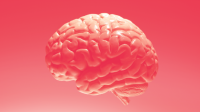Redefining Smart: Multiple Intelligences
Edutopia reports on the resurgent relevance of Howard Gardner’s ground-breaking theory, which changed the game for students and teachers.
Your content has been saved!
Go to My Saved Content.In his landmark book Frames of Mind: The Theory Of Multiple Intelligences, published in 1983, Harvard University education professor Howard Gardner unveiled a theory of multiple intelligences that famously rejected the traditional and long-held view that aptitude consists solely of the ability to reason and understand complex ideas.
Instead, he identified seven separate human capacities: musical, verbal, physical, interpersonal, visual, logical, and intrapersonal. And not all of them, including the category he added years later -- naturalistic -- could be easily evaluated by the standard measuring stick of the time: the IQ test.
Psychologists, unimpressed with Gardner's mold breaking, mostly looked the other way. Teachers, on the other hand, were electrified. The book supported what educators had known for a long time: Kids in their classrooms possess natural aptitudes for music, sports, emotional understanding -- strengths that cannot be identified in traditional tests. Gardner had given voice to their experience. Boston University education professor Scott Seider describes the reaction as a "grassroots uprising" of educators at all levels who embraced multiple intelligences (MI) theory "with a genuine passion."
In the articles that follow, we cast our light on places where the passion awakened by Gardner burns brightest today -- in schoolwide curricula, in the hearts and minds of individual teachers, and, as ever, in the evolving philosophy of Gardner himself. Like so many education reforms, the theory of multiple intelligences still is the subject of vociferous and ever-changing debate. Such is the bumpy path to change.
In keeping with our mission to illuminate what works in public education, we look at the specific ways MI enriches the experience of students and advances the goals of their teachers. Be sure to look for more of our MI coverage here on Edutopia.org, which includes a 2018 article on some common misunderstandings about multiple intelligences theory and learning styles.
